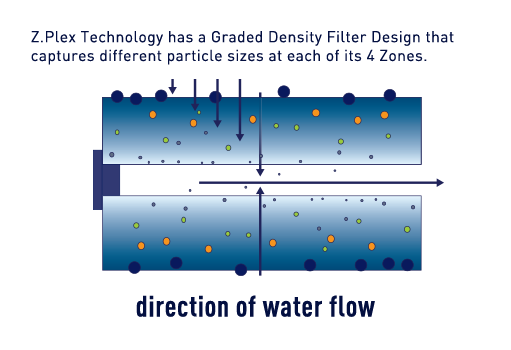Depth Cartridge Filters
Avoid pressure drops, increase dirt holding capacity, and extend filter life
Veolia depth cartridge filters set new industry standards. Depth cartridge filters made with Z.Plex technology deliver up to twice the dirt holding capacity at a 50 percent lower pressure drop than conventional filters. Graded-density Hytrex depth cartridge filters for process and pure-water applications trap larger particles near the surface and smaller particles near the center, helping maximize service life. Precise control boosts the positive filtration characteristics of graded density, tight micron cutoffs for high efficiency, and maximum void area for high dirt-holding capacity.
Many cartridges claim to be depth filters with superior dirt holding capacity, but true depth filter cartridges retain a wide range of different sized particles throughout an entire cross section of the filter. Veolia depth cartridge filters use Z.Plex and Hytrex manufacturing technologies to produce filters with long life, low pressure drop, superior dirt holding capacity, high efficiency, and consistent quality.

